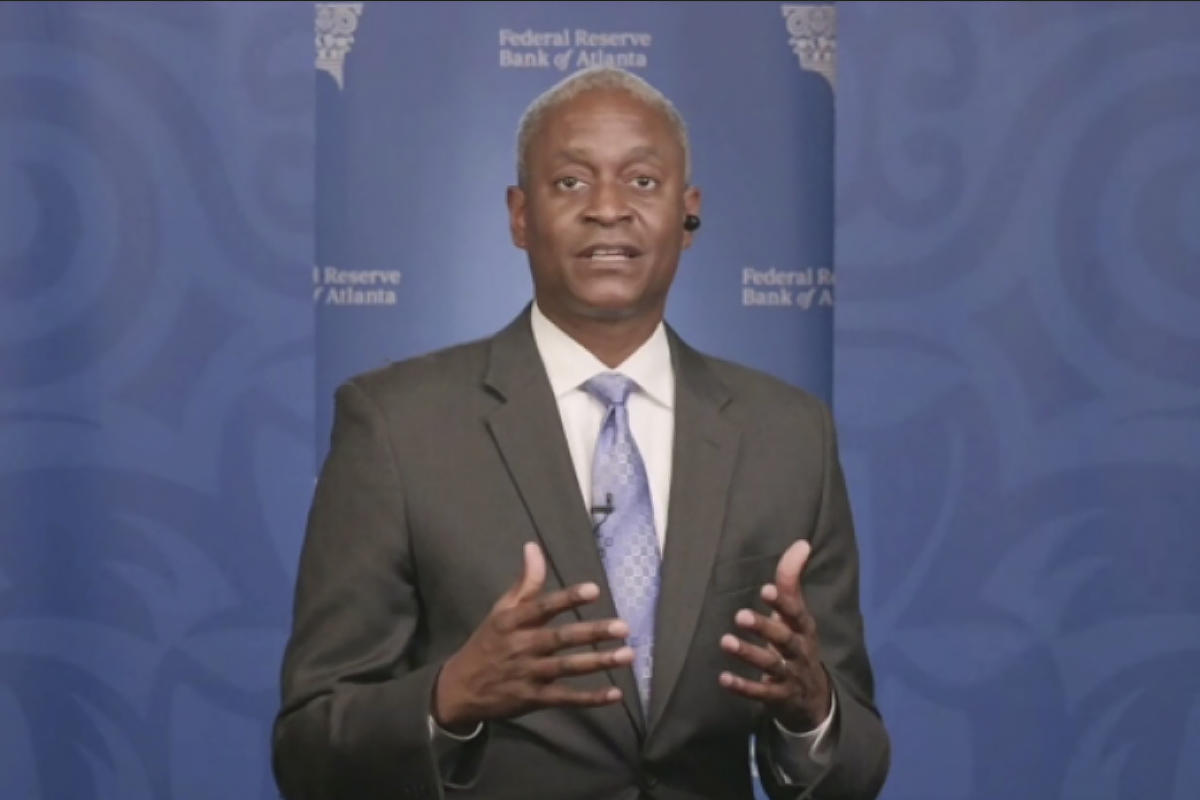Two Federal Reserve officials explained why they were in favor of reducing interest rates by a jumbo 50 basis points instead of a smaller first cut, citing progress on inflation and a cooling job market.
Those twin developments “have emerged much more quickly than I imagined at the beginning of the summer,” Atlanta Fed president Raphael Bostic said in a speech.
“In this moment, I envision normalizing monetary policy sooner than I thought would be appropriate even a few months ago.”
Minneapolis Fed president Neel Kashkari said in an essay Monday that he voted in favor of cutting by 50 basis points because “the balance of risks has shifted away from higher inflation and toward the risk of a further weakening of the labor market, warranting a lower federal funds rate.”
Bostic and Kashkari became the latest Fed policymakers to outline their specific votes for Fed’s first cut since 2020 and rationales for going with the bigger cut.
Fed Chair Jerome Powell, in a press conference with reporters last Wednesday, argued the larger 50 basis point cut was an attempt to get ahead of a cooling job market now that inflation is on its way down.
The lone dissenter to the Fed’s policy decision, Federal Reserve governor Michelle Bowman, said Friday that “a smaller first move in this process would have been a preferable action” because inflation is still not down to the central bank’s 2% target.
“I see the risk that the Committee’s larger policy action could be interpreted as a premature declaration of victory on our price stability mandate,” Bowman said in a statement.
Bowman was the only member of the Fed to dissent in last Wednesday’s policy decision, saying she preferred a smaller cut of a quarter percentage point instead of a half percentage point. She was the first to do so in two years and the first Fed governor to dissent since 2005.
It is clear the decision last week was a close call for other Fed officials, too.
Bostic acknowledged that during his remarks Monday, saying he feels the Fed hasn’t declared victory over inflation yet. That residual concern might have led him to trim by 25 basis points, but that would have ignored a recent cooling in the job market.
“The path of inflation in 2024 has been choppy, and the unpredictable nature of rents and housing prices still worries me,” he said. “I will not be comfortable claiming victory if we stall short of our inflation goal.”
The Fed will get a new reading from its preferred inflation measure, the Personal Consumption Expenditures Price Index (PCE) this Friday.
Analysts expect Friday’s PCE reading to come in at 2.3% year over year, down from the prior month’s 2.5% annual increase, according to Bloomberg data.
The fact that inflation not yet down to the Fed’s 2% target is keeping Bostic from cutting in larger increments.
But Kashkari doesn’t see much evidence inflation might surprise to the upside, pointing to wages and core non-housing services prices that continue to fall.
Looking ahead, Kashkari said he thinks interest rates are still too high, though didn’t indicate how quickly rates should come down or to what level.
“While there remain mixed signals about the underlying strength of the U.S. economy and I remain uncertain just how tight policy is, I do believe policy remains tight today,” said Kashkari.
While a softening job market suggests a weakening economy, he added, other measures suggest economic strength, pointing to resilience in GDP and consumer spending that suggest still-solid underlying demand.
Kashakari said he has heard cautious optimism about the underlying health of the economy and while a recession can never be ruled out, his contacts aren’t seeing one around the corner.
One development that could cause Bostic to cut rates faster is a deterioration in the job market.
Right now the job market is not yet “flashing red” for him, and he doesn’t believe the job market has dangerously weakened. Though he stresses that job growth over the last year hasn’t been as strong as initial data suggested.
“Any further evidence of material weakening in the labor market over the next month or so will definitely change my view on how aggressive policy adjustment needs to be,” said Bostic.
Click here for in-depth analysis of the latest stock market news and events moving stock prices
Read the latest financial and business news from Yahoo Finance


